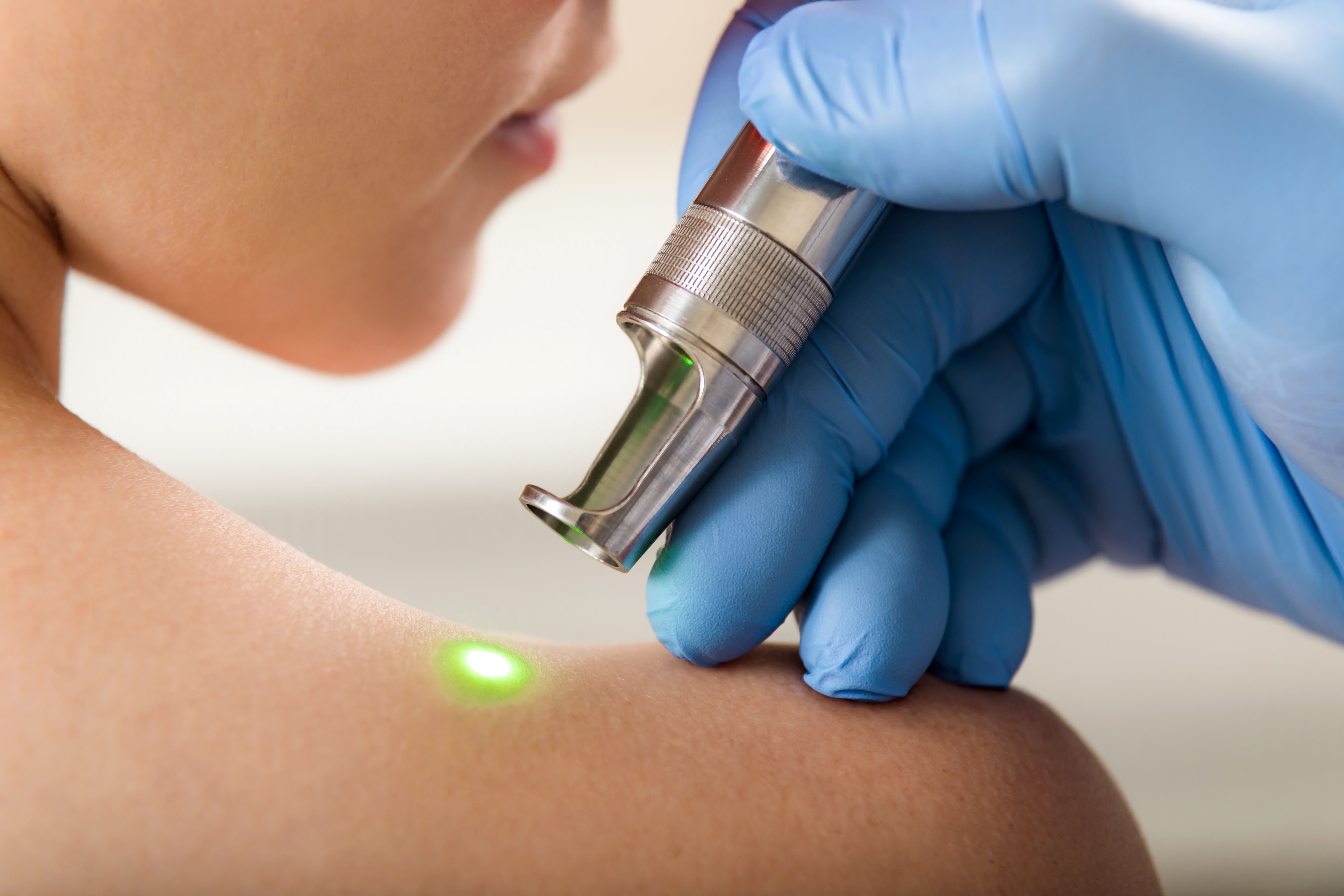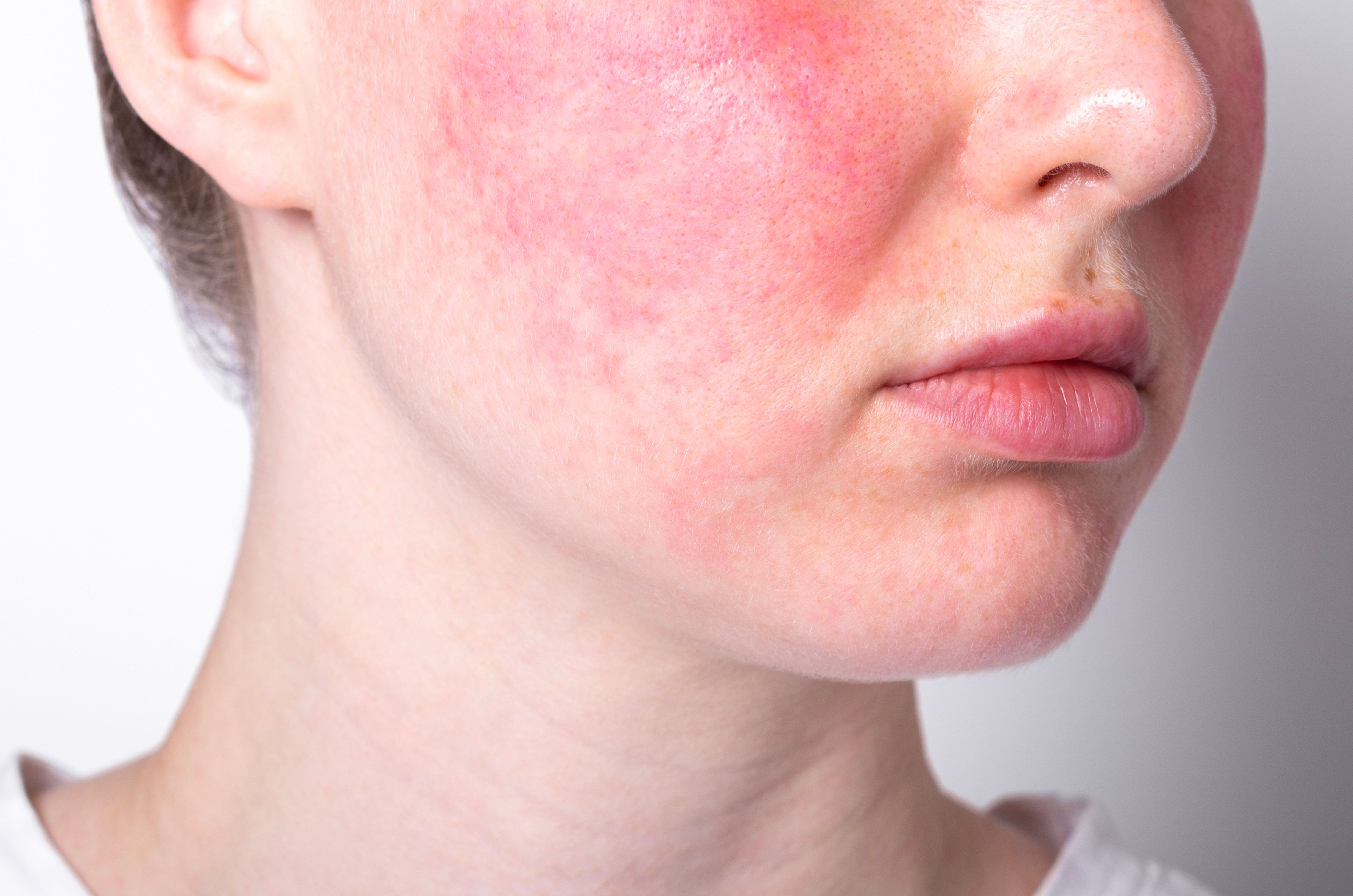- Acne
- Actinic Keratosis
- Aesthetics
- Alopecia
- Atopic Dermatitis
- Buy-and-Bill
- COVID-19
- Case-Based Roundtable
- Chronic Hand Eczema
- Drug Watch
- Eczema
- General Dermatology
- Hidradenitis Suppurativa
- Melasma
- NP and PA
- Pediatric Dermatology
- Pigmentary Disorders
- Practice Management
- Precision Medicine and Biologics
- Prurigo Nodularis
- Psoriasis
- Psoriatic Arthritis
- Rare Disease
- Rosacea
- Skin Cancer
- Vitiligo
- Wound Care
Article
Preventable eye injuries
Resurfacing lasers pose a threat to the cornea and ocular surface. Ocular injuries associated with lasers include misshapen pupils, iritis and vision loss. Expert suggests against performing micro-focused ultrasound treatments within the orbital rim. Standard ocular shields do not provide effective protection against focused ultrasound.
Safe laser treatment around the eye requires avoiding common misconceptions and knowing how laser energy interacts with these tissues, says Brian S. Biesman, M.D., of Vanderbilt University Medical Center in Tennessee.
"Most lasers used for hair removal and tattoo removal, as well as vascular lasers, pose a significant threat to the eye," he says.
The visible and near-infrared spectra encompass commonly used wavelengths from 532 nm (KTP) through 1,927 nm (thulium). In between lie the pulsed dye laser (585/595 nm), ruby (694 nm), alexandrite (755 nm), and several diode lasers and Nd:YAG (1,064 nm). These wavelengths create intense absorption in target tissues, particularly melanin and hemoglobin at wavelengths up to 1,064 nm, and water at wavelengths above that level, Dr. Biesman says.
"Resurfacing lasers don't pose a threat to tissues in the back of the eye, but they pose a threat to the cornea and ocular surface. That's why it's important to always use protective lenses if you're performing laser resurfacing of the eyelid or periocular area. Many physicians don't always do that," he says.
Dr. Biesman said there is a common misconception that intense pulsed light (IPL) devices cannot injure the eye because they're not lasers – they do not produce a single wavelength.
"But more importantly, they are not collimated light. Any IPL device can create the same consequences as lasers, such as injury to the iris and retina,” he says. He also advises against performing micro-focused ultrasound treatments within the orbital rim, as it is not possible to shield the eye safely from this energy source. "Standard ocular shields do not provide effective protection against focused ultrasound," Dr. Biesman says.
Injury to iris
Unintended melanin absorption can injure the iris, which can result in a misshapen pupil and the transmission of excess light through the iris into the eye. "Part of the iris's job is that the pigment keeps unwanted light out of the eye, allowing a certain amount of light to pass through. In a bright room, the pupil is small, and in a dark room, the pupil dilates," he says.
If the iris or pupil is damaged, too much light can enter the eye, creating permanent photosensitivity.
"Iritis is usually a temporary phenomenon that may be caused by a number of disease states, but iritis following laser treatment may be a sign of injury to the iris,” Dr. Biesman said. Symptoms of iritis can include pain, ocular injection (redness) and photophobia. Iritis occurring immediately after laser or IPL treatment probably portends more serious ocular consequences and not from the iritis itself. “The fact that there was enough injury to cause iritis may well lead to more symptomatic issues once the iritis settles down,"1 he says.
Melanin absorption also can injure the retina and the ciliary body. Absorption of pigment from the foveal retinal epithelium can lead to loss of central visual acuity, while peripheral retinal damage can impair peripheral and night vision. YAG lasers (long-pulsed or Q-switched 1,064 nm, which are commonly used for hair removal, vascular treatments and treatment of unwanted pigment and tattoos) can damage the ciliary body, resulting in decreased aqueous production. This occurs less commonly than injury to the pupil, full iris or retina.
Clinical cases
Dr. Biesman reviewed some clinical cases in which ocular injury occurred following cutaneous laser treatment. In one such case, LHR of a unibrow was performed with an 810 nm diode laser, resulting in a misshapen pupil and permanent light sensitivity. The treating physician claimed to have used appropriate ocular protection. In a similar case, an operator used a long-pulsed 1,064 nm Nd:YAG laser to treat a unibrow, reportedly with corneoscleral shields in place, resulting in a keyhole shaped pupil.
"I don't believe you should be performing LHR of the brow [unibrow or otherwise]. From a safety standpoint, you're better off using electrolysis. There have been some permanent injuries as a result of using lasers to treat unibrows, and to treat port wine stains (PWS) with no ocular protection [for the patient],” he said. In the latter case, a long-pulsed alexandrite laser had reportedly been pointed at the eyelid, away from the globe, while the eyelid was distracted from the globe.2 The treatment unfortunately resulted in ocular injury to a child.
In a study presented by Richard Fitzpatrick, M.D., at the ASLMS annual meeting several years ago, energy from both 532 nm and 1,064 nm lasers was found to penetrate ex-vivo human eyelids.3 Ocular injuries resulting from transeyelid heat transmission have occurred with 1,064 nm lasers.2 Treating an eyelid PWS with a long-pulsed 1,064 nm laser, with a corneoscleral shield in place, resulted in a heat-related corneal injury, Dr. Biesman said.
Protective eyewear
Ocular safety demands that laser surgeons use wavelength-appropriate protective eyewear, and that both patients and ancillary staff receive adequate protection, he said. Metallic shields are required when performing CO2, Er:YAG and other types of skin resurfacing, while plastic shields must be used when performing radiofrequency treatment, Dr. Biesman said.
External shields are appropriate when treating the peripheral or inferior face with hair-removal devices, provided the shields are properly applied. External patches may be an appropriate alternative, he said, but they are no substitute for corneoscleral shields, and are relatively costly.
“At almost every meeting I attend, people ask, 'Do I really need to use the contact lens if I'm resurfacing the eyelid?'" Dr. Biesman said. His reply? "I understand that you're careful. But what if your patient moves? Or, what if your nurse bumps your foot when you are unprepared and you step on the foot pedal by mistake? Unexpected things can and do happen. When you're treating the eyelid with vascular and resurfacing lasers, you must be extraordinarily careful."
"The message that ocular safety is of critical importance seems to be getting through. However, it is extremely important to always remain vigilant about ocular safety."
References
1. Shulman S, Bichler I. Ocular complications of laser-assisted eyebrow epilation. Eye (Lond). 2009;23(4):982-3.
2. Hammes S, Augustin A, Raulin C, Ockenfels H, Fischer E. Pupil damage after periorbital laser treatment of a port wine stain. Arch Dermatol. 2007;143(3):392-394.
3. Iyer S, Suthamjariya K, Fitzpatrick RE. Irradiation of excised eyelid skin with 532 nm, 755 nm, 810 nm and 1064 nm lasers: implications for periocular treatment and safety. Lasers
Surg Med. 2003;Sup.15(60):19.
Newsletter
Like what you’re reading? Subscribe to Dermatology Times for weekly updates on therapies, innovations, and real-world practice tips.














